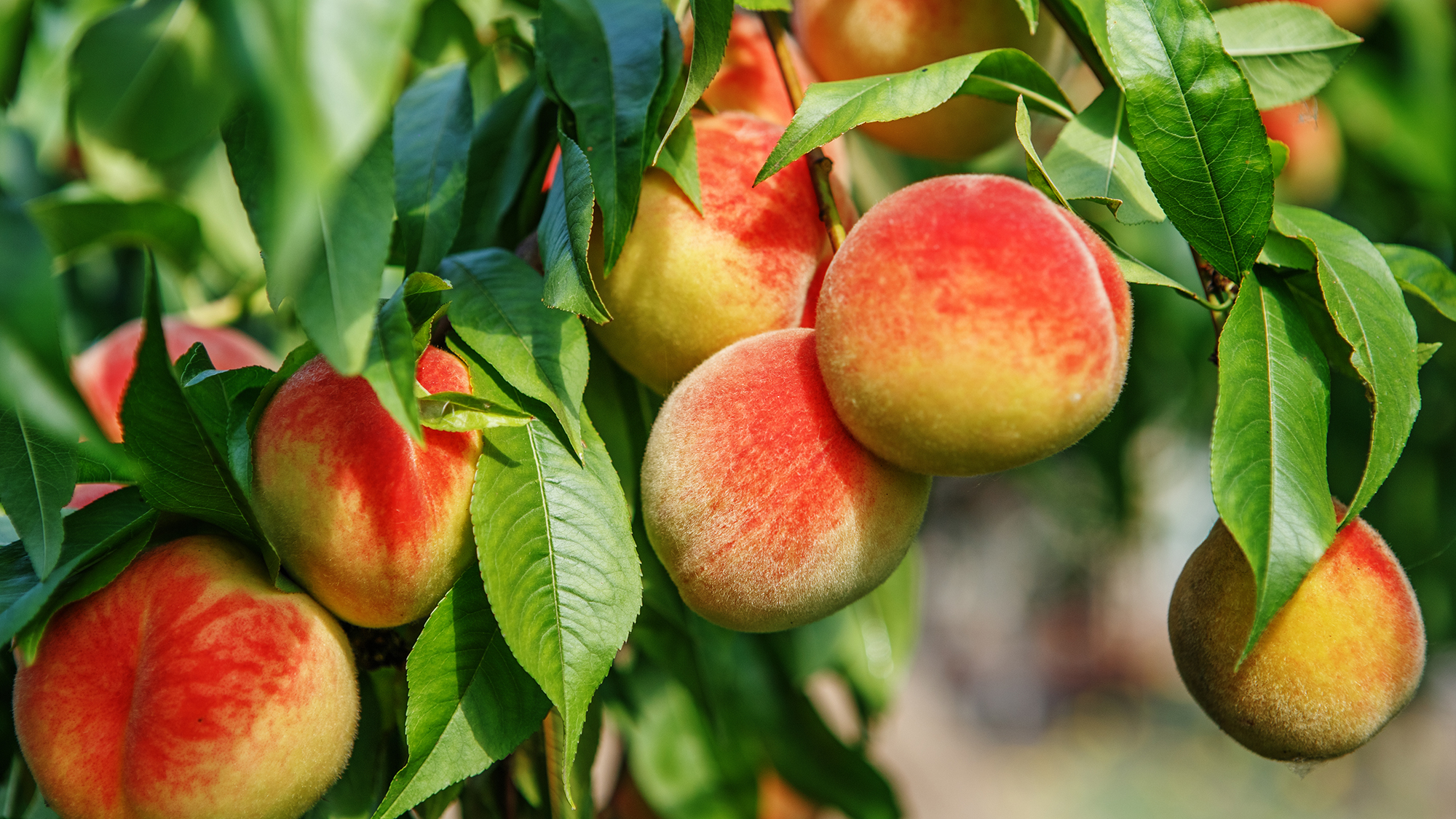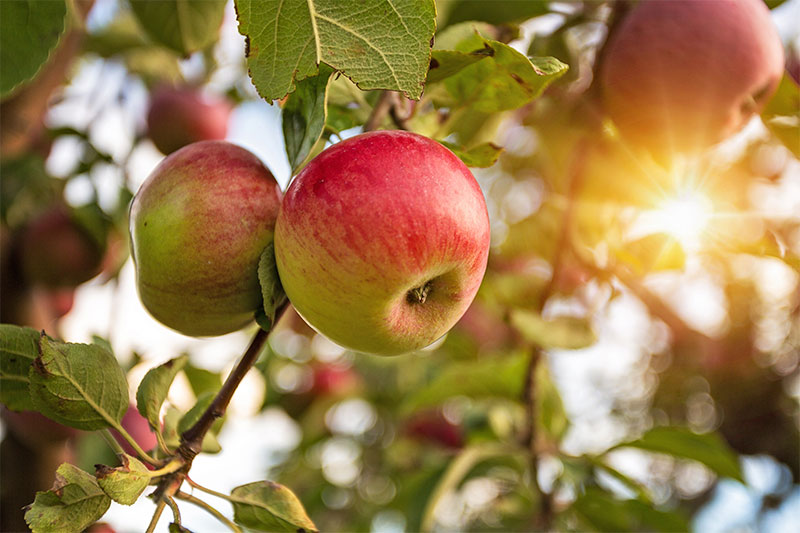
When it comes to enhancing your garden with fruit trees, the benefits are numerous — from the aesthetic appeal of flowering trees to the practical advantage of having fresh produce right at your doorstep.
Importance of Your Local Climate
The first step in choosing the right fruit tree is understanding the local climate. Britain’s weather can range from cold northern winds to warmer southern temperatures, affecting how well different types of fruit trees will thrive. For example, apple trees are particularly hardy and can be grown in most British climates, whereas fig trees may require the warmer and sheltered environments found in southern England.
Chill Hours
One critical factor to consider is the concept of ‘chill hours’ — the number of hours temperatures are below 7°C during the dormant winter season. Many fruit trees, such as apples, pears, and cherries, need a specific number of chill hours to produce fruit effectively. If your area doesn’t naturally provide these, consider varieties that require fewer chill hours, which are often better suited to milder regions.
Frost Pockets
We learn from CRJ Fruit Trees expert, which you can also visit not only to learn but to buy fruit trees from, that another aspect to consider is the local topography. Areas situated in valleys or lower grounds can become ‘frost pockets,’ where cold air settles and frost persists. This condition can be detrimental to blossom and young fruits. Planting trees on a slight slope or choosing late-flowering varieties can mitigate this risk, ensuring that the flowers and fruits are not exposed to late spring frosts.
Soil Types and Drainage
The type of soil in your garden is another significant consideration. Fruit trees generally require well-drained soil rich in organic matter. Here’s how to determine if your soil is appropriate:
- Clay Soils: Heavy and can retain too much water, leading to root rot. If your garden has clay soil, consider raising the planting area or incorporating ample organic matter to improve drainage.
- Sandy Soils: Drains very quickly and may not retain enough nutrients. Enrich sandy soils with compost to increase nutrient content and water retention.
- Loamy Soils: Ideal for fruit trees as it provides a balance of drainage and nutrient retention.
It’s also wise to perform a pH test of your soil. The majority of fruit trees like neutral or slightly acidic soil (pH 6.0–7.0). If your soil is too alkaline, incorporating sulphur can help adjust the pH levels. Conversely, if it’s too acidic, adding garden lime can make the soil more alkaline.
Selecting the Right Varieties
Choosing varieties that will thrive in your specific conditions is crucial. Here are some popular options across different fruit categories:
Apples
Apples are among the most popular and versatile fruits to grow in Britain. For colder regions, consider varieties like ‘Bramley’s Seedling’, which is renowned for its cooking qualities, or ‘Cox’s Orange Pippin’, known for its delightful flavour. In milder regions, ‘Egremont Russet’ is a favourite due to its unique texture and taste.
Pears
Pears require similar conditions to apples but are slightly more sensitive to cold winds. ‘Conference’ is a hardy variety that performs well in most British climates, known for its long storage life. ‘Williams’ Bon Chrétien’, commonly known as ‘Williams’, thrives in warmer areas and is prized for its juicy flavour.
Stone Fruits
Stone fruits, such as cherries, plums, and peaches, generally require warmer and more sheltered conditions. ‘Stella’ is a self-fertile cherry variety that is relatively hardy and suitable for smaller gardens as it doesn’t require a pollination partner. Plums like ‘Victoria’ are adaptable and can be grown in a wide range of soils and climates within Britain.
Planting Tips
Proper planting is just as essential as selecting the right tree. Here are some general tips to ensure your fruit trees get the best start:
- Timing: Plant your trees during the dormant season, from late autumn to early spring. This period minimizes stress on the plants and allows them to establish roots in the new location before spring growth begins.
- Positioning: Ensure that trees are planted in a sunny, sheltered spot to maximize sun exposure and reduce the risk of damage from strong winds.
- Spacing: Allow adequate space between trees. This varies depending on the rootstock and tree size but generally, 3-4 meters between trees is sufficient to ensure they have enough room to grow without competing for nutrients.
Advanced Considerations for Tree Health and Maintenance
After selecting and planting the right fruit trees for your British garden, ongoing care and maintenance become critical to ensure your trees grow healthy and produce abundantly. Here, we’ll cover essential care tips including watering, pruning, and disease prevention to help your fruit trees thrive.
Watering and Mulching
Proper watering is essential, especially during the first few years of a tree’s life and during dry spells. Young trees need regular watering to establish their root systems. It’s important to water deeply rather than frequently, as this encourages roots to grow downward in search of moisture, which helps in drought tolerance as the tree matures.
Mulching around the base of the tree can greatly assist in moisture retention, suppress weeds, and provide a slow release of nutrients. Organic mulch, such as wood chips or compost, is beneficial as it gradually decomposes and improves soil structure. The mulch should be kept a few inches away from the trunk to prevent rot and discourage rodents.
Pruning and Training
Pruning is a vital practice that helps control the size and shape of your tree, encourages healthy growth, and improves fruit quality. The best time to prune most fruit trees is during the dormant season, avoiding very cold periods which can make branches brittle and more susceptible to damage.
For young trees, focus on establishing a strong, balanced framework of branches. As trees mature, pruning should aim to remove any dead or diseased wood, thin out overcrowded branches, and cut back areas that have already produced fruit to stimulate new growth and fruiting branches.

Pest and Disease Management
Fruit trees can be susceptible to a range of pests and diseases, which can affect their health and productivity. The secret to handling these difficulties is early intervention and routine monitoring:
- Aphids and mites can be controlled with horticultural oils or soap sprays, which are safe and environmentally friendly.
- Codling moth and fruit flies require more specific strategies such as pheromone traps or exclusion netting.
- Fungal diseases like scab or mildew are best managed by ensuring good air circulation around the trees and using fungicidal sprays if necessary.
Choosing disease-resistant varieties can significantly reduce the need for interventions and ensure healthier trees. Local nurseries can provide advice on the best resistant varieties for your area.
Fertilization
Fruit trees require different nutrients at various stages of their life. A balanced fertilizer, typically higher in potassium and phosphorus than nitrogen, can be applied during the growing season to support flowering and fruiting. Over-fertilization, especially with nitrogen, can lead to excessive leaf growth at the expense of fruit production and can also increase the risk of diseases.
Organic options such as bone meal, fish emulsion, or composted manure can also be excellent sources of nutrients and improve soil health. It’s crucial to follow the specific needs of each type of fruit tree, as their nutritional requirements can vary.
Understanding Pollination
The pollination process is crucial for fruit production. While some fruit trees are self-fertile, many need a compatible partner for cross-pollination to produce fruit effectively. Planting trees in pairs or groups can ensure adequate cross-pollination. Additionally, attracting bees and other pollinators to your garden by planting a variety of flowering plants can significantly enhance your fruit trees’ productivity.
Harvesting
Knowing when to harvest your fruit is as important as any other care technique. Most fruit should be picked when fully ripe, as determined by color, fragrance, and ease of detachment. Some fruits, like pears and apples, continue to ripen off the tree, so they can be picked when mature but still firm.
Regularly harvesting your trees not only provides you with fresh produce but also stimulates the trees to produce more fruit in the following seasons. It’s also a good practice to remove any fallen fruits from around the tree to prevent disease and discourage pests.
By integrating these care practices, you will ensure that your fruit trees remain healthy, vigorous, and productive.





More Stories
How To Easily Turn Your Garden Organic
Great Gardening Tips To Build The Perfect Garden!